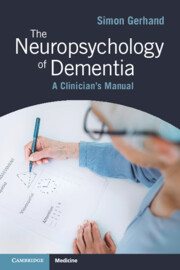Book contents
- The Neuropsychology of Dementia
- The Neuropsychology of Dementia
- Copyright page
- Contents
- Preface
- Acknowledgements
- Section 1 Essential Background Knowledge
- Chapter 1 Overview
- Chapter 2 Diagnosing Dementia
- Chapter 3 Functional Neuroanatomy
- Chapter 4 Neuropsychological Assessment in Dementia Diagnosis
- Section 2 Diagnosing Different Types of Dementia
- Section 3 Intervention
- Section 4 Recent Developments/Contemporary Issues
- Index
- References
Chapter 3 - Functional Neuroanatomy
from Section 1 - Essential Background Knowledge
Published online by Cambridge University Press: 25 October 2024
- The Neuropsychology of Dementia
- The Neuropsychology of Dementia
- Copyright page
- Contents
- Preface
- Acknowledgements
- Section 1 Essential Background Knowledge
- Chapter 1 Overview
- Chapter 2 Diagnosing Dementia
- Chapter 3 Functional Neuroanatomy
- Chapter 4 Neuropsychological Assessment in Dementia Diagnosis
- Section 2 Diagnosing Different Types of Dementia
- Section 3 Intervention
- Section 4 Recent Developments/Contemporary Issues
- Index
- References
Summary
This chapter considers neuroanatomy in terms of the way in which cognitive processes and emotions are organised. Rather than using a strict localisationist approach, with specific cognitive functions being concentrated in particular anatomical areas, emphasis is placed on a more contemporary view of the brain as organised as a series of circuits. The main areas of cognition are considered, namely perception, language, memory, executive function, and attention. Differences between common terms are explained, such as grey and white matter, cortical and subcortical. This chapter also makes use of illustrations.
Keywords
- Type
- Chapter
- Information
- The Neuropsychology of DementiaA Clinician's Manual, pp. 34 - 44Publisher: Cambridge University PressPrint publication year: 2024

